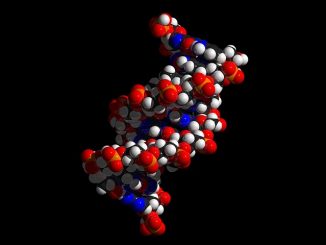
Last year, a little girl named Layla became the recipient of gene-edited immune cells. Layla was battling with leukemia, and the cells she was provided with were able to remove all traces of her disease. In other words, the cells cured her of her leukemia.
Layla’s case is just one case. But it’s a groundbreaker because it proves the good that gene editing can do. And that is save a life. If gene editing can work this way, then it can probably be used to save many more lives.
Genetic engineering — the process of altering genes — is a complicated process. It is worth noting that the technique used on Layla took several years to develop. But now we have a new genome-editing tool called CRISPR which stands for ‘Clustered Regularly Interspaced Short Palindromic Repeats’. And instead of years, gene editing can now be done in just weeks.
CRISPR is being likened to a pair of scissors. It’s used to cut or snip certain sections of DNA (ex. inherited genes that will likely lead to disease) and replace them with healthier or more beneficial cells. Because of how effective this method is, scientists are confident enough to proceed with human trials, with the first one already underway in China.
The trial involves using CRISPR to disable a gene called PD-1 — a gene that exists in the immune cells of cancer patients. PD-1 has what is being referred to as an ‘off switch’ which allows it to disable itself, in other words, to make itself useless. Essentially, this means that when PD-1 turns itself off, it makes a person’s immune system stop working.
The work of CRISPR in this case is to remove the ‘off switch’ so PD-1 can’t turn itself off and just let the immune system continue doing what it’s supposed to do. Once the PD-1 gene is edited, it is returned to the patient’s body. The hope is that without the ‘off switch’, the patient’s immune system will be stronger.
As reported by Nature, the study — led by oncologist Lu You at Sichuan University — is being conducted on ten patients with lung cancer. The first injection of gene-edited cells was done on October 28, with the progress of the treatment being carefully observed until the expected conclusion of the trial in 2018. Aside from testing the effectively of the treatment, the safety of the procedure is being carefully monitored as well.
The U.S. will soon be conducting its own trial — one that will attempt to add tumor-targeting genes. While this kind of approach has already shown favorable results in trials involving leukemia, it does not seem to be working well when it comes to fighting off solid tumors.
Which is why they will combine the two methods — injection of PD-1 edited genes and the addition of tumor- targeting genes. Hopefully, this combination will produce better results.
If the trials prove successful, it can lay the groundwork for wider use of the technique in treating other kinds of diseases. And eventually, maybe we can dismiss our negative notions about gene editing once and for all and just see it in its most positive form – a life saving technique.
- Bulenox: Get 45% to 91% OFF ... Use Discount Code: UNO
- Risk Our Money Not Yours | Get 50% to 90% OFF ... Use Discount Code: MMBVBKSM
Disclaimer: This page contains affiliate links. If you choose to make a purchase after clicking a link, we may receive a commission at no additional cost to you. Thank you for your support!




Leave a Reply